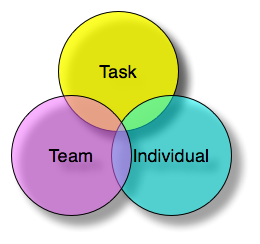Blog 5 Why should anyone be lead by you
The final blog focuses on the issue of “leadership”. At the beginning it will show the author’s type of leader and two main methods to lead others. And then demonstrate author vision of leadership and use real example to show who inspire author for understand effective leadership. Also it illustrates leadership skill which author will learn in MBA process.
What type of leader are you
There are several leadership style in the organisation, such as laissez-faire, autocratic, participative, transactional and transformational. The author tend to become participative leader which also called the democratic leadership style. The leadership values the input of team members and peers, and the participative leader is responsible for make final decision. It can help the author receive different opinions or suggestions to improve the quality of final decision. Also the leadership can boots staff morale, because every employee has opportunity to make contribution to the decision-making process, this makes them to feel as part of the organisation and their opinions are important. In addition, if a company wants to make changes, a participative leader can help staff accept changes easily, because they play a role in the process. However, participative leadership may meet challenges when a company want to make a decision in short time (Chen and Tjosvold 2006).
How ready are you to lead others
The author concludes two main methods to lead others effective.
1 Vision is more important than control
Vision is the company’s own long-term development plan and the description of ultimate goal, the company which lack of ideals and vision to guide business will cringe before the risks and challenges, they are engaged in the business is not possible to have the confidence of the firm. Some people mistakenly believe that the responsible of leader is manage and control organisational structure, operations and people. The top-down command management style can play a certain effect at some point, but it will greatly limit the creativity of employees and businesses, and easy to lose business goal. In contrast, the leader sets up a clear, exciting and achievable vision of company is significant important for the long term development of an enterprise (Landsberg 2011).
2 Faith is more important than the index
Every business leader should insist on the right of the faith, not just one-sided pursuit of targets or achievements of some of the figures or all decisions are made for the short term interests to give up the most basic standards of corporate behavior. The correct faith can bring sustainable development opportunities, conversely, if all the focus on the pursuit of short-term indicators, although there is a moment of opportunity to get the results, it may lead to bias the direction of enterprise development and enable enterprises quickly lose motivation of development (Dorr 2007).
Successful companies always stick to their core values. For instance, “Never satisfied and to be the best” is one of Google’s core values, for search technology, Google constantly through research, development and innovation to achieve the long-term development, and aims to be a pioneer in this area. Despite Google is the industry’s leading search technology company, it is still absolutely determined to adhere to the “insatiable” belief, continue to achieve beyond their own and dedicated to the user getting good search products (Google 2014).
What is your vision of leadership?
The author’s vision of Leadership refers the act of inspiring subordinates to perform and engage in a common goal or objective effective. A good leader can make people do their job positive – “I want to do it”. It can bring better result than management which make people passive – “ask people to do it” (Lussier and Achua 2012).
John Watkins, the tutor of Leading in a Changing World inspired the author directly understand of effective leadership in this term. because, compare with other tutors John usually spent more about 10 minutes to detailed explain what the seminar will cover in this time and ask did students happy for that in each beginning of seminar. Also, involved almost every group discussion in the class to answer question carefully, and confirmed did everyone understand knowledge to day in the end of class. In addition, John replied email to care about author when author absented class because of allergy. These actions makes HRM students feel that their opinions and feedback of this course are important for the tutor and they are the part of teaching process. This can help students enjoy 3 hours seminar and learn knowledge positive and effective.
The team is more important than the individual is a idea which the author learnt from colleagues. For example, one person can not finish the activity in Liverpool Street station in week 1. Also in audit industry, individual can not finish project for a huge organisation, team work will provide more effective and accurate work for the project. Furthermore, during the period of MBA in Coventry University London Campus, the author will develop leadership skills which are received feedback and use it to improve final decision, comprehensive analyse individual results and give them useful feedback and increase ability to improve performance of team work.
In conclusion, the author is a participative leader and concluded two main methods to lead others which are vision is more important than control and faith is more important than the index. In addition, leadership can inspire people to finish a common goal, also John Watkins help author more understand about leadership. finally, team can provided more effective and accurate performance in audit industry and author will develop decision-making, analysis and performance skill in MBA process.
List of references
Chen, Y. F. and Tjosvold, D. ‘Participative Leadership by American and Chinese Managers in China: The Role of Relationships’. Journal of Management Studies 43 (8), 1727-1752
Dorr, D. (2007) Faith at Work: A Spirituality of Leadership. Collegeville: Liturgical Press
Google. (2014) Annual Report 2013. Mountain View: Google Inc
Landsberg, M. (2011) The Tools Of Leadership: Vision, Inspiration, Momentum. London: Profile Books Ltd
Lussier, R. and Achua, C. (2012) Leadership: Theory, Application, & Skill Development. Mason: South Western Educational Publishing














